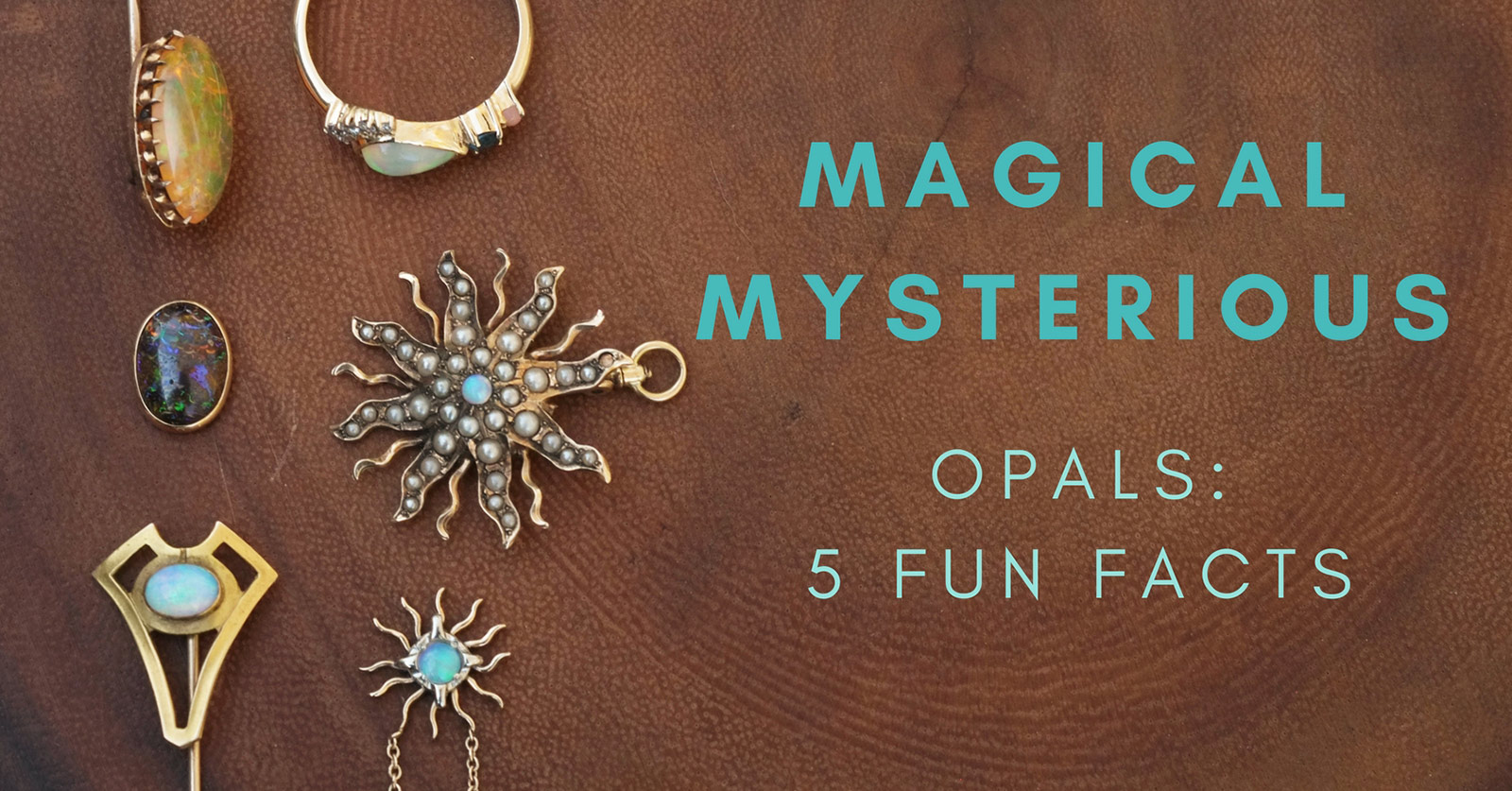Opals are amazing stones and they are so hot right now. Bad Zoolander reference aside, I love them. I also receive a lot of inquiries about making opal rings. Because of that, I’d love to shed some light on a few fun facts about about everyone’s favorite gemstone.
Fun Fact 1: There are many types of opals.
There are many types of opals. Like other gemstones, there are varieties and subcategories for different colors or locations, and opals are no different. While there are many types, there are certain categories of opal that you see most commonly: Welo (Ethiopian Opal), Australian (White Opal), and Boulder (Colorado Opal). All have the rainbow coloring that we love about opals, but look of these opals varies based on the location in which they are formed.
The main difference is the coloring. Both Welo (Ethiopian) and White (Australian) opals are mainly white, but have varying levels of transparency. Welo tends to be more transparent than Australian, and are sometimes referred to as Jelly Opals, simply due to how clear the gemstone can be.
Boulder (Colorado) Opals, are typically darker in color. They can be dark brown, or even black, and have amazing pops of opal running throughout them caused by the soil in which they formed.
Fun Fact 2: Opals are Silica. Yes, like the stuff in your new shoe boxes.
Each gemstone is comprised of minerals derived from the soils and earth around them. When combined with elements from the air, and intensified under extreme pressures, they harden and form a solid, crystalline substance that we start to recognize as a gem. When opals form, it’s due to silica getting trapped in a matrix of rock. Under a microscope, this silica looks like tiny little ping pong balls stacked on top of one another. The way the light interacts with these spheres is what causes the unique coloration we all associate with opals.
Fun Fact 3: It’s all about the “play of light”
The value of an opal is in the way light hits it, creating the tiny rainbow coloring everyone loves. Sometimes people call this coloring opalescence, but its technical term is “play of light.” The more play of light an opal has, generally the more valuable the stone is. And the rarer the type of opal, the higher the valuation it has if it has beautiful play of light. While most opals are very economical, the rarest, most intricately colored opals can cost thousands.
Fun Fact 4: Not recommended for every day wear.
Opals are easy to love with their neutral coloring and little flashes of light. Those who love them, love them. And because of that, they want to wear them constantly. But like most otherworldly things, they need breathing room. Because they are made of silica, they are soft. They can be dinged, cracked, and broken under the right circumstances. I’ve seen several rings with nice large opals come in to the shop to have the stone replaced several times.
Lately, I’ve had many clients want engagement rings with them instead of diamonds, but if you are looking for an every day stone that can withstand most situations, this is not it. Opals work best in pendants or earrings, or as rings that won’t get every day wear and tear. As an engagement ring, they can work, but you need to be sensitive to what situations you’ll be wearing it in, and plan accordingly. I too love opals, and think their otherworldly beauty is so romantic, but I also want you to have a custom piece of jewelry that lasts the test of time.
Fun Fact 5: They are October’s birthstone.
The lucky babes in October get to wear this stone year round. According to legend, the opal is associated with magic, rainbows, and mysticism. While we’re not 100% sure why it’s associated with the month of October, one surmises the changing seasons and otherworldly traditions of this time of year probably had something to do with its selection. When the dead can cross over during this time of year, why wouldn’t the magic of an opal help? Also according to lore, it’s bad luck for any person not born in October to wear them. However, that legend faded when vast opal mines were found in Australia… but that’s a story for another time…

